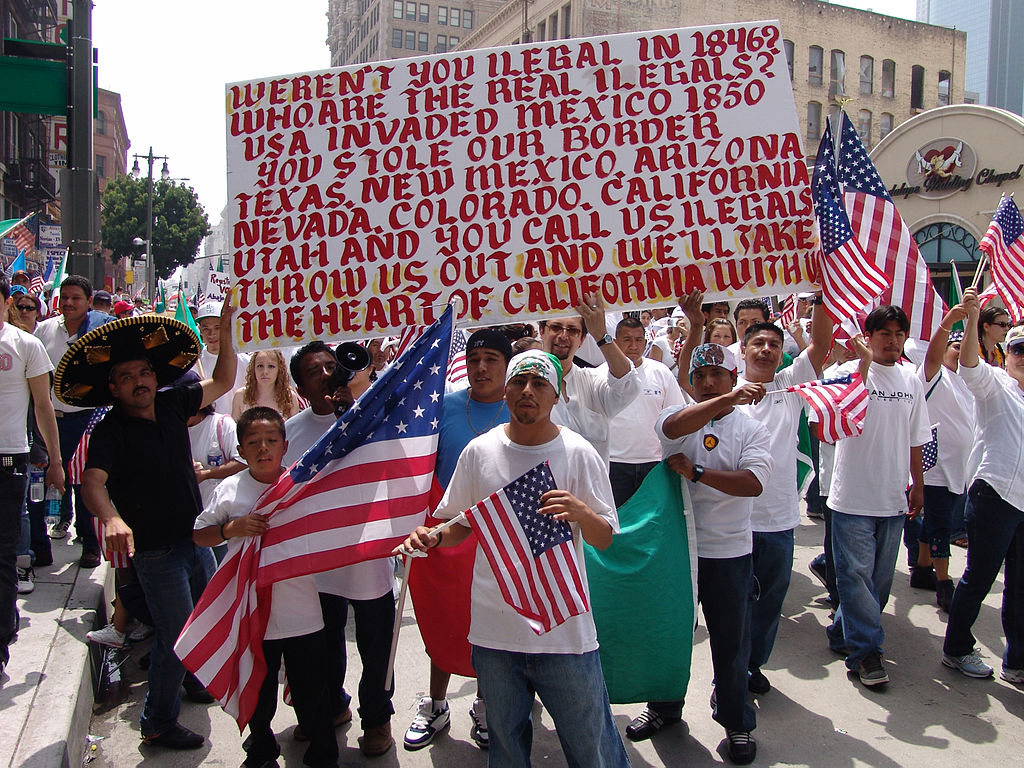Racism is an issue that frequently emerges when observing the political and social situation in the United States, and this Latino Observatory has shown many cases of discrimination. In the April 24 edition, we mentioned the discriminatory attitudes towards the population of Latin origin on the Mexican border as opposed to the admission facilities offered to refugees from the
Ukrainian War. On April 17, we had highlighted the news that Latinos complained about the lack of representation in an
African-American majority county and, on April 30, we drew attention to the fact that white Americans tend to view black Americans in a more friendly light as Latino immigration increases. In contrast, racism against the Latino/Hispanic population increases due to the fear of an
“invasion of immigrants”.
In this issue, we take up the subject again because of a survey released by the
Pew Research Center that addresses racism within the Latino community in the United States. According to the report, a quarter of Latino adults says they have experienced discrimination or unfair treatment from other Latinos. Skin color is linked to greater Latino-on-Latino discrimination: About four-in-ten Latinos with darker skin (41%) say they have experienced discrimination or unfair treatment by another Latino, while 25% with lighter skin color say the same. Nativity is linked too. Latinos born in Puerto Rico or in another country are more likely than those born in the 50 U.S. states or the District of Columbia to say they suffered discrimination or unfair treatment by someone who is also Latino (32% vs. 23%). Still, Hispanics are just as likely to say they personally experienced discrimination or unfair treatment from someone who is not Hispanic. Roughly a third (31%) say so, with skin color also linked to the share of Hispanics who say this has happened to them. Hispanics with darker skin were more likely than those with lighter skin to say they experienced discrimination or were treated unfairly by someone who is not Hispanic (42% vs. 29%).
Another
Pew Research Center survey, released on March 18, 2021, showed that the majority of the American population experiences at least some discrimination against blacks, Hispanics and Asians. According to the survey, “Large shares of Americans say there is at least some discrimination against several groups in the United States, including 80% who say there is a lot of or some discrimination against Black people, 76% who say this about Hispanic people and 70% who see discrimination against Asian people. Nearly half of Americans say Black people face ‘a lot’ of discrimination in society today. Nearly half of Americans (46%) say there is “a lot” of discrimination against Black people. About three-in-ten see a lot of discrimination against Hispanic people (30%) and Asian people (27%). Americans are much less likely to say there is discrimination against White people: 40% say White people face at least some discrimination, and just 14% say White people face a lot of discrimination.”
It is important to emphasize that racism and prejudice are problems occurring in a global level. This can be seen with the discrimination against people from Zimbabwe in South Africa, with the unequal treatment that Shias receive in the Sunni majority countries of the Arabian Peninsula, with the natives of Okinawa Island in the other provinces of Japan or even in Myanmar with towards the Rohingya minority. This problem is accentuated in the countries of the American continent that lived with the European conquest and the African slavery that accompanied it.
In this sense, despite apparently insane, it is not surprising that a certain group of Latinos is discriminated against by another, since the term Latin/Hispanic designates much more a geographical (Latin America) and linguistic (Castilian) origin than a well-defined identity. defined. Thus, there is greater identification between a Honduran or a Guatemalan than between them and a Venezuelan, Argentine or Cuban.
The population of Latin America is quite diverse and its composition was shaped by colonialism. It is interesting to note that in the populations of the Caribbean islands, the indigenous element was diluted, either by the extermination of the original populations, or by the introduction of the agricultural production model based on the exploitation of labor of African origin. This is different from the regions of the continent where there was a high density of native populations whose labor was exploited in the various economic activities organized by the Metropolis, as in Mexico, Peru, Bolivia or Guatemala. There are still societies that were strongly influenced by European immigration at the end of the 19th century, such as Argentina, Uruguay, Chile and southern Brazil.
When a large contingent of Latin Americans migrates to the United States, it brings its specificities, in such a way that each of the large groups of migrants ends up not recognizing themselves in the other, hence the estrangement that occurs among the members of this very heterogeneous population, who identifies as Mexican-American, Puerto Rican, Cuban-American, Salvadoran-American etc.
Within this diversity, attention is drawn to the new survey released on May 2 by the Pew Research Center, which explicitly addresses people who identify as
“Afro-Latino”. According to the study, an estimated six million individuals identify as “Afro-Latina” and see themselves differently within the broader community of 62 million Latinos in the United States. In this sense, beyond linguistic and national affiliations, the life experiences of Afro-Latinos are shaped by race, skin shade, and culture that set them apart from other Hispanics. In this sense, it is worth thinking about the influence of religions of African origin, such as Candomblé or “Santeria,” religions of Yoruba origin.
The
Associated Press report draws attention to the methodological difficulties encountered by the researchers when carrying out their work: “The survey asked adults whether they self-identify as Afro Latino separate from other questions on race or ethnicity. As a result, the number also varies from U.S. Census Bureau sources, which count Afro Latino as anyone who identifies as Hispanic and Black in a two-step race question. The 2020 census show there are 1.2 million people of all ages that identify as such, much lower than the 6 million estimated in the latest center report. “The thing to consider here is that Afro Latino identity transcends racial identity and cannot be captured by a checkbox-type of question where you mark your ethnicity,” said Ana Gonzalez-Barrera, who has studied Latinos for about 15 years and has worked with Pew Research Center for about 12 years.”.
Analyzing this issue from the perspective of coordinated action by the Latino population in the United States, the construction of “sub-identities” tends to undermine their political capacity to influence the course of American society. Such segmentation can be helpful for those companies that explore market niches since they can offer “custom-made” products. However, from a community as whole perspective, such segmentations are very bad, as it tends to highlight specific differences that are less essential than the enormous economic and social barriers that place most Latinos in the United States in a very vulnerable position, whether they are of Mexican, Dominican, Puerto Rican or Cuban origin..
 commons.wikimedia.org
commons.wikimedia.org











